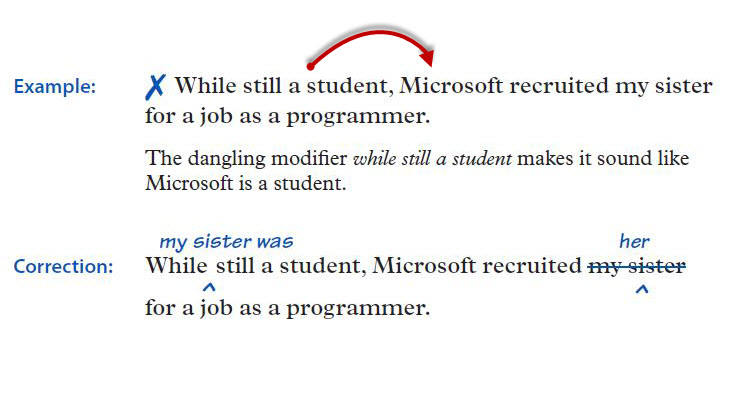Introduction to Modifier Placement
OVERVIEW
Modifiers describe nouns, verbs, or other modifiers such as Introduction to Adjectives and Adverbs. A modifier can be one word or more.
Modifiers must refer clearly to the words they are describing, which usually means keeping them close together. Certain modifiers can be moved outside the main sentence to provide background information and clarity. If these modifiers are not clearly connected to the words they describe, the meaning may be misunderstood. Errors in modifier placement occur when readers cannot tell the relationship between the modifier and the word(s) being described.
WATCH EXAMPLES
The video illustrates four common modifier placement errors. The key to successful modifier placement is being able to draw the shortest arrow from the modifier to the word(s) being described. As you watch the video and work through this unit, try to imagine drawing an arrow that shows this relationship.
READ EXAMPLES
Modifiers add details. If placed incorrectly, readers struggle to understand what those details mean.
The most common modifier placement error is a dangling modifier, as shown in the following sentence:

This correction revises the sentence to eliminate the dangling modifier. With other types of errors, modifiers and the words they describe are simply moved closer together.
CONTINUE THROUGH THE UNIT
The study pages focus on modifier placement. As you read through the study pages and practice with LearningCurve before taking the post-
Don’t forget to work smartly!